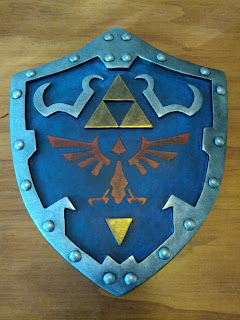Dimensions: 1860mm x 1320mm x 450mm
Materials
Corner posts:
4 x 430mm Cypress Gold (115mm x 115mm)
Side cladding:
6 x 2.4m Merbau and other hardwood skirting (115mm x 18mm)
8 x 2.4m Merbau and other hardwood skirting (65mm x 18mm)
Picture frame bed edge:
2 x 2.4m New Oak (185mm x 19mm)
Centre slats:
9 x 1490mm Tasmanian Ash (90mm x 19mm)
4 x 1490mm Tasmanian Ash (45mm x 19mm)
Framing:
Roughly 12 x 1.8m Structural Pine (mostly 110mm x 35mm)
Bed head:
We used the bedhead off of an old, broken queen size bed (1620mm x 1150mm x 90mm).
Surface Finishes:
500ml Gloss Clear Polyurethane (I use Cabot's, but any reputable brand is suitable)
200ml Decking Oil (for the Cypress Gold corner posts)
1lt White exterior house paint (I use Solagard Extreme, but again any reputable brand is suitable)
Fixing:
Slats, framing and picture frame - 300 x 65mm Deckings Nails (3.5mm with helical screw)
Side cladding - 80 x 35mm Bullet Head nails (2mm galvanized)
Bed head and frame load points - 10 x 150mm Bullet Head Nails (4mm galvanized)
On the right are the side cladding (skirting boards), at the bottom the corner posts (Cypress Gold) and on the left is some structural pine.
You don't have to, but I like to sand and apply a couple of base coats to most of the visible wood before I started putting furniture together. This makes the finish on the joins look crisp and accurate, and makes the final finish super easy to apply (and much cleaner than if all the wood started unfinished).
The corner posts, from left: Raw, Sanded, Finished.
The side cladding, with two coats of white exterior paint applied.
Instructions
When working with recycled materials you can't write accurate instructions ahead of time; first you must get the materials and then work to their dimensions. In the case of this daybed the limiting factor was the bed head; there was no way that I could change its dimensions. That said it was about the right size so I just built around it.First of all I had to brace the bed head. As it is now a structural member it can't be trusted to stay together firmly, so I've used some structural pine as a brace (the cream coloured piece).
Next is getting the basic dimensions right. With 5mm of overhang for the picture framing at the sides and front, I had to make it 1850mm x 1315mm from the outside of the posts. I used the side rail off of a broken bed, some structural pine and nails to tack and hold it all in place. At this point you should measure carefully and align all the corners at right angles. I use string lines and a tape measure to get it all correct, then commence the framing proper.
Once it's all measured and straight, a beam/joist centre goes in and is checked for alignment once more before having steel bracket nailed at a few beam/joist intersections to stay any movement. Then the picture frame is test fitted by using screws in each corner for easy adjustment. Only affix the picture frame surround with nails when all the centre boards are in place, and make sure that you use PLENTY of nails (I used about 25 for each edge piece). Once everything is straight, the centre can be clad with the Ash lengths. To space them out I used 4mm nails between boards, and affixed them with two nails per board per joist (total 10 per each length).
Once the top was done, the sides had to be added. This was done fairly simply by cutting three lengths of structural pine and screwing them into place so that the cladding has something to be nailed to. I used three on each side, leaving the rear open for ventilation and possible storage at a later date. The cladding was then affixed from the top down, ensuring that the first board was affixed straight so that the rest can simply to nailed in place accurately.
Krystal, daydreaming and making it hard for me to apply polyurethane.
Once the sides are clad all that remains is the finishes applied to the wood. For the top I used an oil based wood finish (polyurethane) with a rag. I recommend wearing gloves, and all you have to do is rub in a thin coat, wait a day, then lightly sand and reapply. I applied 5 coats to ensure that it was super smooth and well protected.
That's it! Just make sure that once a year you check on any exterior furniture to ensure that it doesn't require a coat of paint/clear. Furniture deteriorates pretty quickly outside, but as long as you take care of the exterior finish pieces will generally last a very long time (it also helps if you use hardwood). All you usually need to do is give it a quick sand and then a new top coat if it's looking a little damaged, or a heavier sand and a couple of coats if it's very badly weathered.
Cheers, all the best!
***
As an aside, the ground is soon going to be Bluestone flagstones and I picked up this brazier from a customer of mine who happens to be a blacksmith. It pumps out a lot of heat, and is basically what I imagine Sauron would use to roast marshmallows (if he was into that sort of thing).






































































